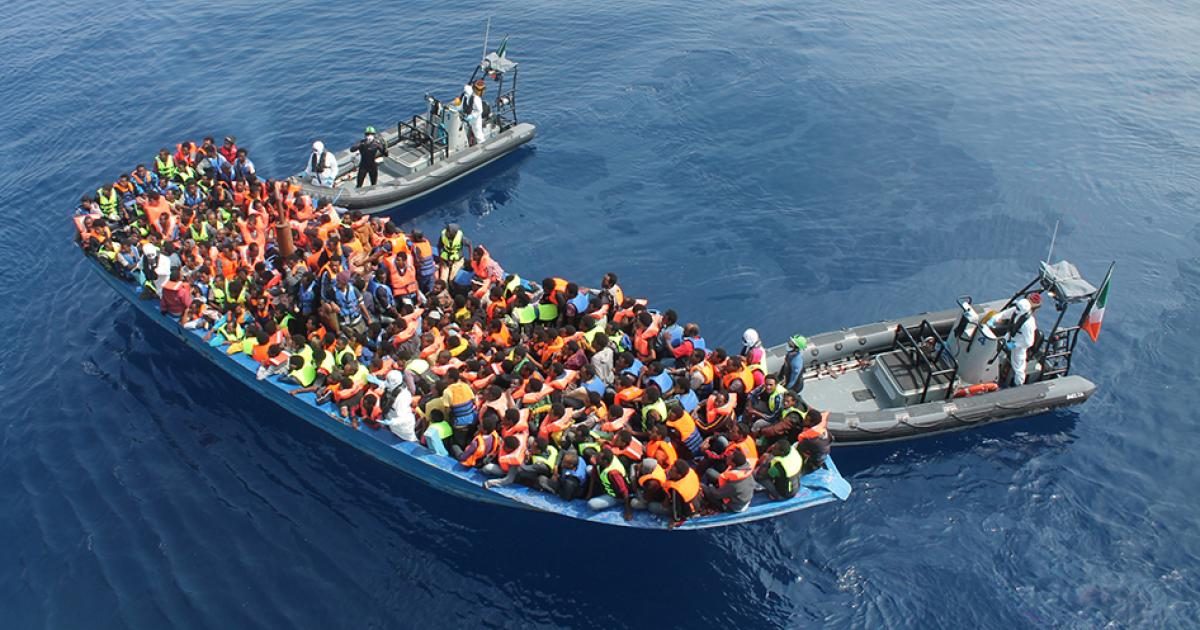Migration Crisis & IT
In the summer of 2015 the refugee crisis in Europe was one of the main topics. That summer a million refugees entered Europe, which resulted in a crisis for the European countries. They had to cope with the division of these refugees from countries as Syria, Afghanistan, and Iraq (BBC 2016).
When entering Europe the refugees went to different countries across Europe. There was no proper division; thus this had a severe impact on European countries. For example, Germany received over 476,000 asylum applications that year. However, this is just based on legal applications, the total amount was twice as large (BBC 2016).
Large amount of refugees were allocated to different countries and this was not easy for both parties. This crisis resulted in an information overload that was difficult to manage for countries. How do they keep track of all the refugee information and what do they do with the information? To tackle, handle and track all the data the United Nations started to use a Mindjet’s SpigitEngage platform (Panburn D). This was originally created for corporations. It also leverages big data analytics with the goal to support the UN with humanitarian activities. The platform brings together create minds and links them with those that need creative ideas.
The platform is a source of crowdsourcing that generates solutions for the migration crisis. Everyone is allowed to come up with solutions for the problems that are stated on the platform. The platform is also available for refugees themselves from a mobile phone. It already resulted in over sixty ideas that were groundbreaking (Panburn D).
The idea of a platform such as SpigitEngage seems to be very useful for both refugees and national organizations. The crowdsourcing allowed generating new ideas and solutions regarding the crisis. In my opinion, it is effective that this platform was made available to refugees, as it allows them to have a voice and help others. It is a strong concept and I think it would be even better if it allows refugees to connect with each other but also with locals so they can fully integrate in their new hometown.
References
Panburn D. 2014. “The UN is turning to big data and crowdsourcing to tackle the refugee crisis”, Motherboard,
BBC 2016. “Migrant crisis: Migration in Europa explained in seven charts”, BBC News, 16 February 2016, http://www.bbc.com/news/world-europe-34131911
United Nations 2016, “What do we do”, United Nations, http://www.un.org/en/sections/what-we-do/


Hi Eefje, thank you for this interesting read.
I agree that IT could be a useful tool to manage crises as the refugee crisis. Considering that it is known that many of the refugees have smartphones (Independent, 2016), the applications can be endless. An example is a sexual education website called “Zanzu” supported by the German government (http://www.zanzu.be/en), which aims at giving refugees a source of information (ranging from general knowledge about the human body to rights & laws in Germany) about a topic that is considered a taboo in many middle eastern countries.
I actually had an idea to use the knowledge from Hofstede (2010) about cultural dimensions in the style of the “zanzu”-website, so as to offer a website where refugees could get a first impression about the mentalities of other countries like e.g. Germany. This might help with social integration?
http://www.independent.co.uk/news/world/europe/why-do-refugees-have-smartphones-syrian-woman-explains-perfectly-refugee-crisis-a7025356.html
http://www.zanzu.be/en
https://geert-hofstede.com/national-culture.html